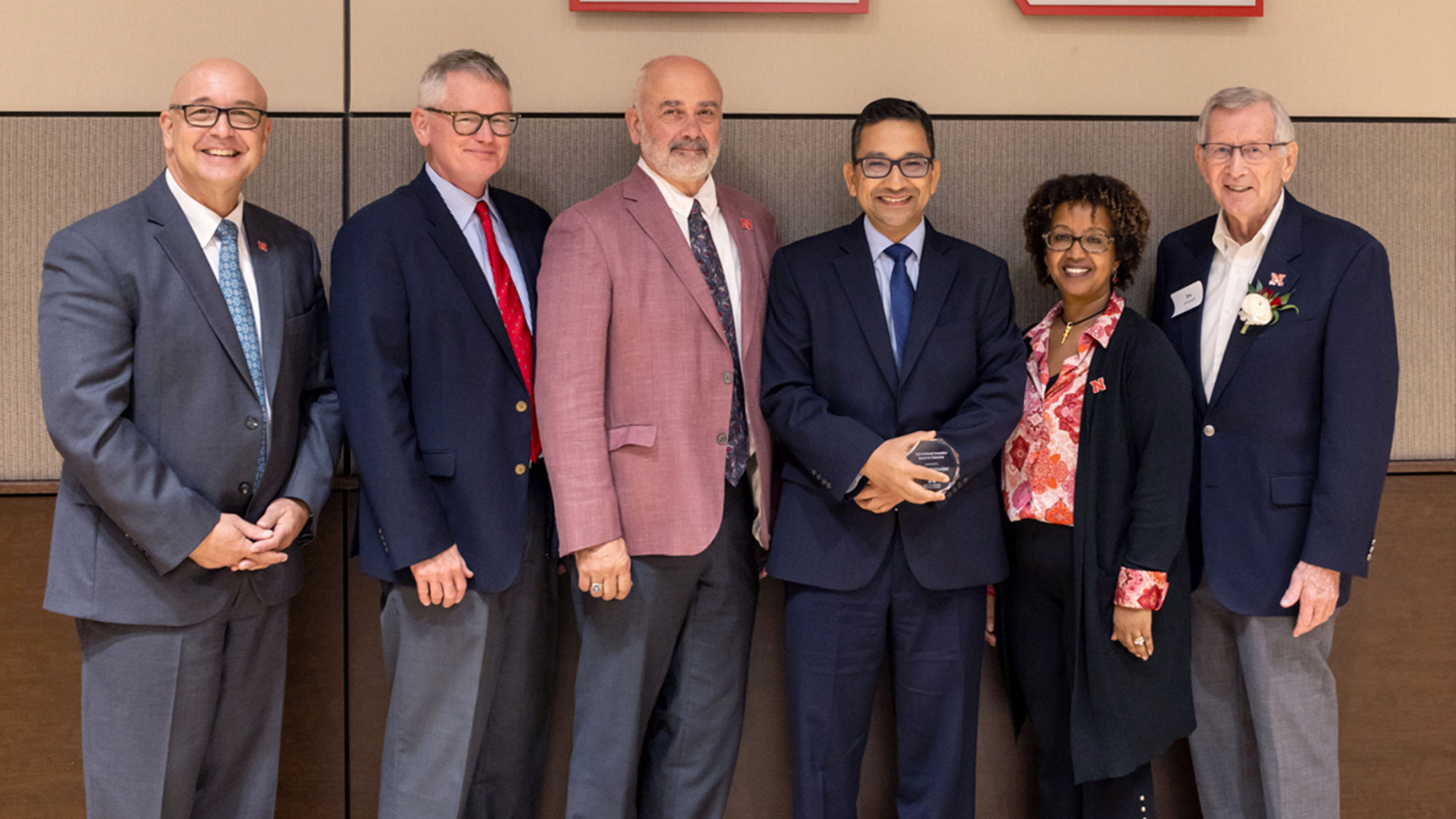
by Chabella Guzman | Panhandle Research, Extension and Education Center
The faculty and staff from the Institute of Agriculture and Natural Resources at the University of Nebraska-Lincoln were honored at the annual IANR Distinguished Faculty Banquet on Sept. 26. Among the awardees was Dr. Bijesh Maharjan, Nebraska Extension Soil Management Specialist. He took home the Omtvedt Innovation Award for Agronomy and Horticulture.
“Dr. Maharjan has developed an extensive portfolio of extension programs focused on improving soil health for growers in Nebraska, particularly western Nebraska,” said Dr. John Westra, director of the UNL Panhandle Research Extension and Education Center in Scottsbluff.
Maharjan has focused his efforts on soil health and developing the concepts of Soil Health Gap and Soil Health Cycle. The U.S. Department of Agriculture and the Natural Resources Conservation Service have considered the practical and scientific merits of the Soil Health Gap concept and included soil sampling of native land, suggested in the Gap concept, in their cost share programs.
A collaboration between the USDA and Maharjan resulted in the Nebraska Soil Health School held across the state. In 2023, nearly 200 growers learned from more than 20 speakers from UNL, USDA-NRCS, and other experts. In 2024, he expanded the soil health collaboration to include events with the Center for Grazing Land Studies and West Central REEC.
The Western Sugar Cooperative worked with Maharjan to manage the coal ash created by processing the sugar beets. The factory used to rely on coal-fired boilers to process sugar beets into sugar, which creates a lot of ash, a coal byproduct.
“(Coal ash) is not to be mistaken with fly ash, which is fundamentally different,” said Rebecca Larson, vice president and chief scientist for Western Sugar. The factory burns coal once, unlike fly ash, which burns twice. The coal ash byproduct is between 20 and 30 percent carbon with an insignificant concentration of heavy metals. “Obviously, we don’t want just to throw it in a landfill,” Larson said. “It will result in a negative greenhouse gas emission consequence. Moreover, landfill disposal is costly.”
Through research, Maharjan found that growers can use coal ash in shallow-rooted cropping systems such as dry beans, peas, and low-carbon soils. Based on his research, coal ash is also in the USDA-NRCS soil carbon amendment incentive program.
In August 2024, Western Sugar was recently awarded a USDA Climate Smart Commodity partnership grant of $6 million to use this coal ash on farmers’ fields. Maharjan is a sub-awardee and will assist Western Sugar in measuring greenhouse gas emissions from coal ash-applied versus the control farms. He will also develop extension programs focused on increasing awareness of implementing the practice's economic, soil, and climate benefits.
Historic soils are a project Maharjan has been working on with scientists across the globe. The group seeks to increase awareness and understanding of continuous, long-term research plots' research and extension programming benefits. He manages the Knorr-Holden Plot, a historic and the world’s oldest irrigated continuous corn research plot at the Mitchell Ag Lab. Maharjan recently shared long-term research from the Knorr-Holden plot at the Centennial Celebration and Congress of the International Union of Soil Sciences in Florence, Italy. The scientists shared their findings from their 100-plus-year-old experiments, emphasizing the invaluable importance of the impact of agriculture on the environment at the national and international levels.
To learn more about IANR faculty and staff awards and the Omtvedt Innovation Award, visit https://ianr.unl.edu/ianr-awards-and-recognition.